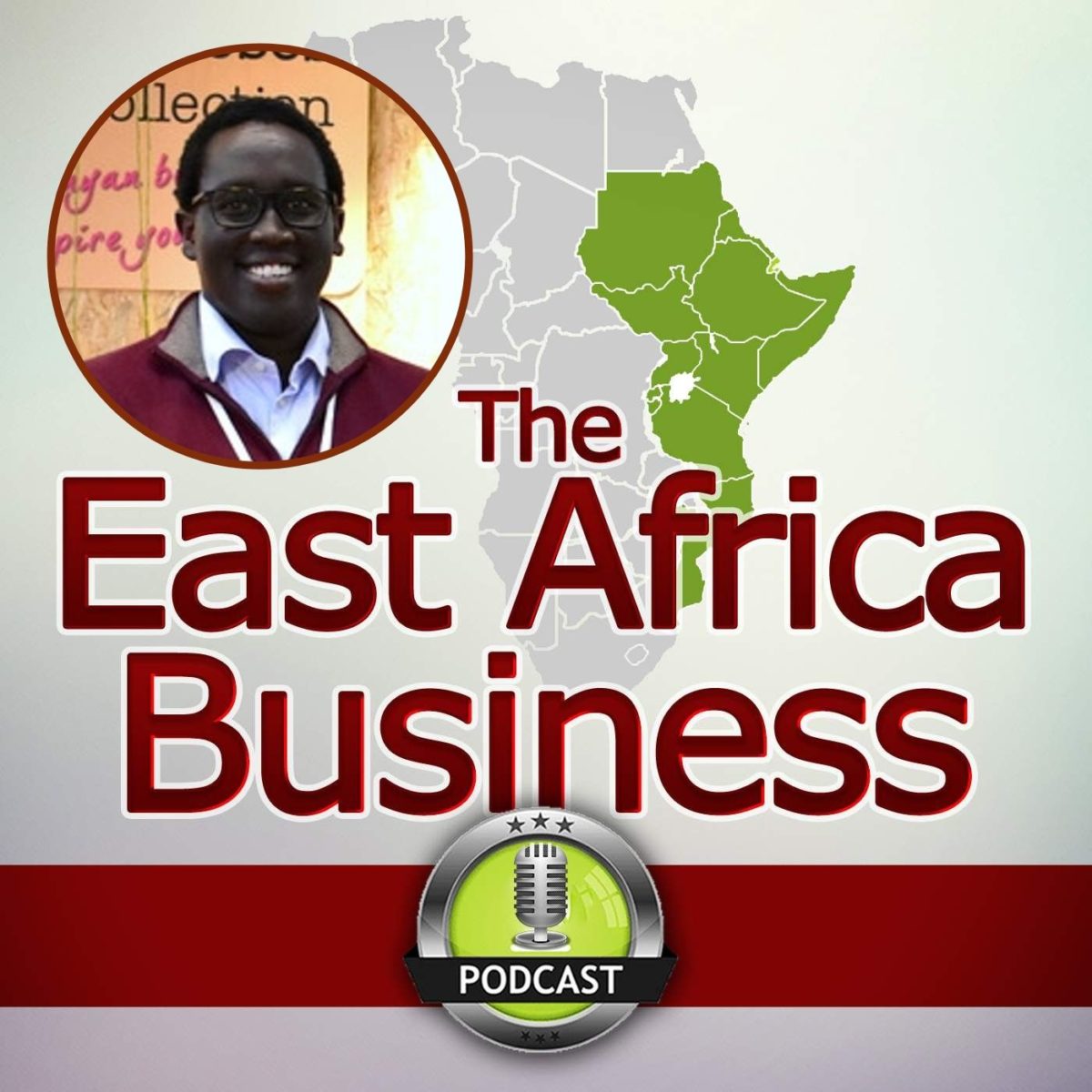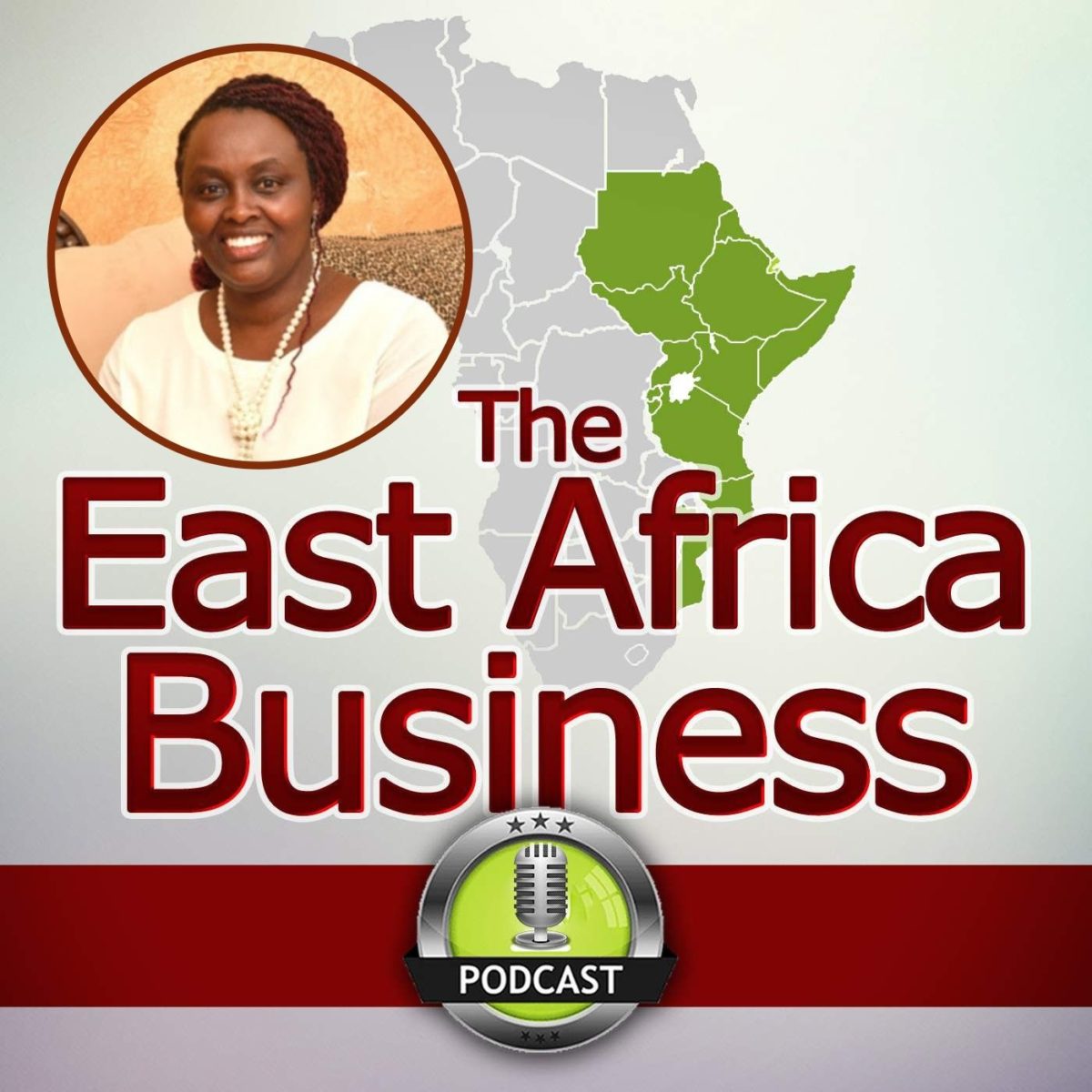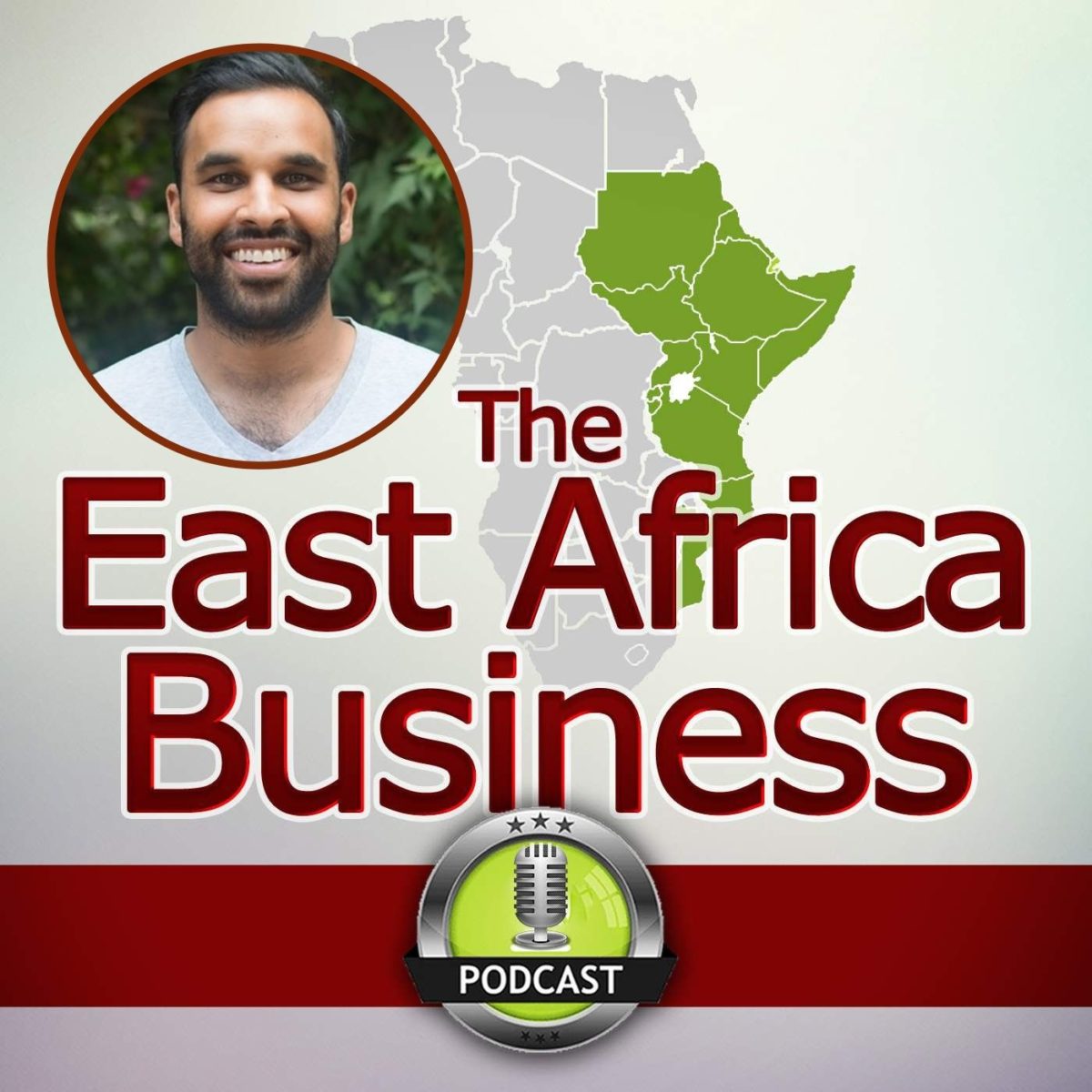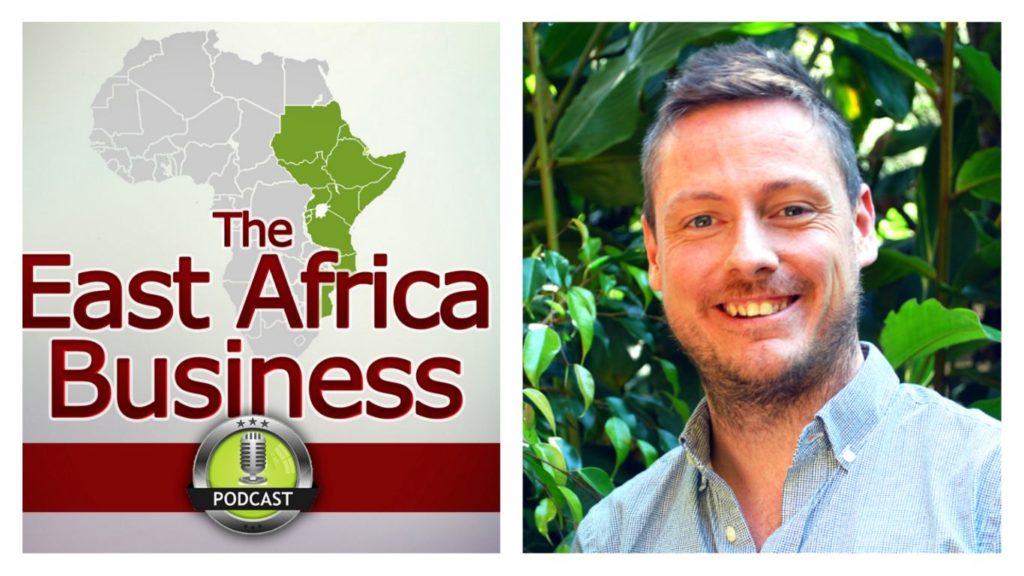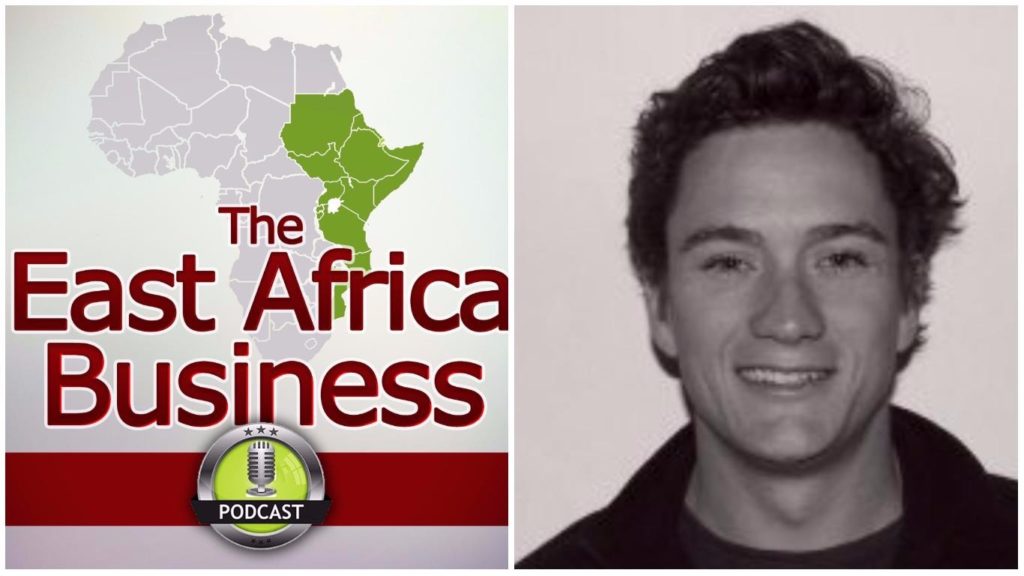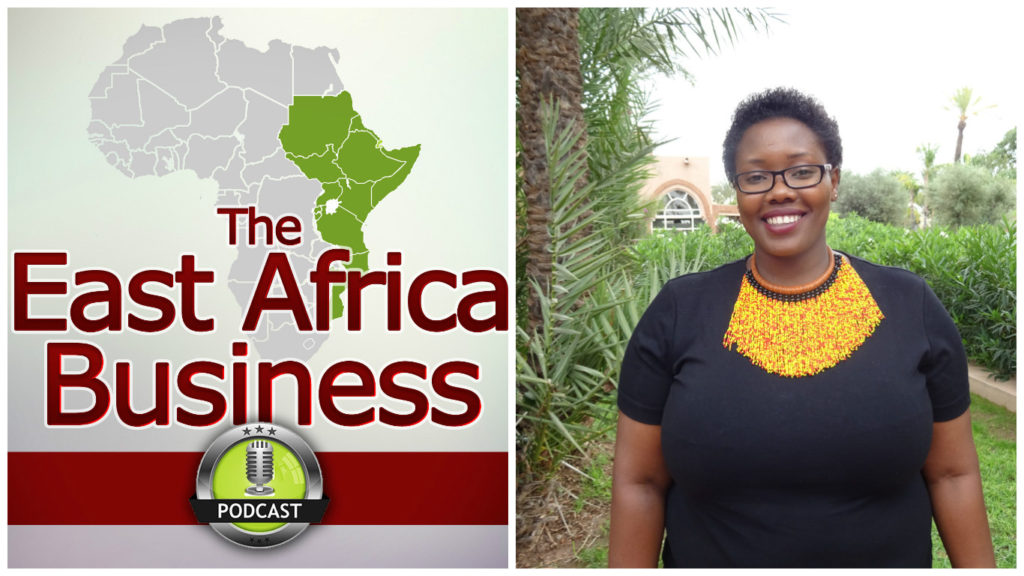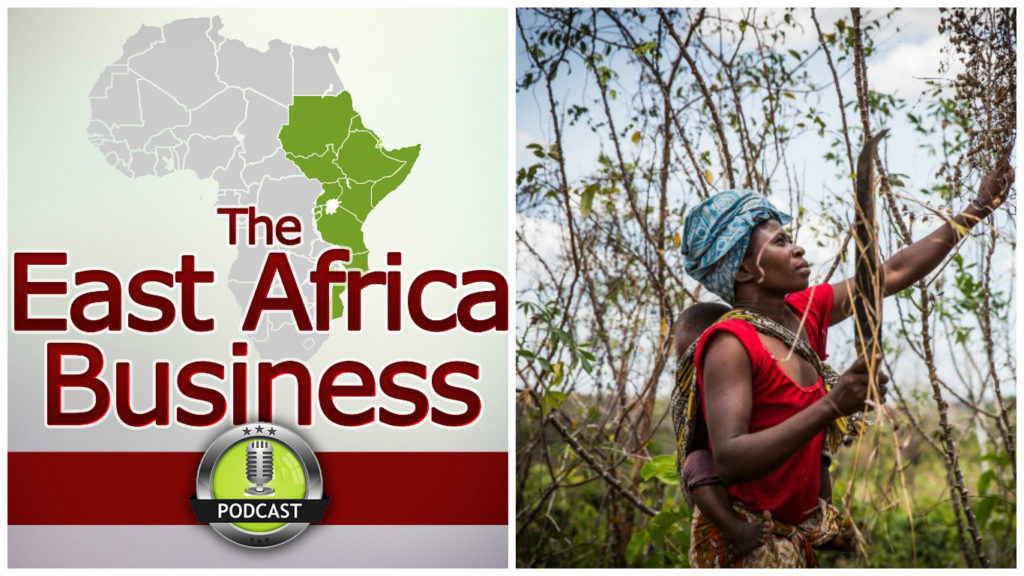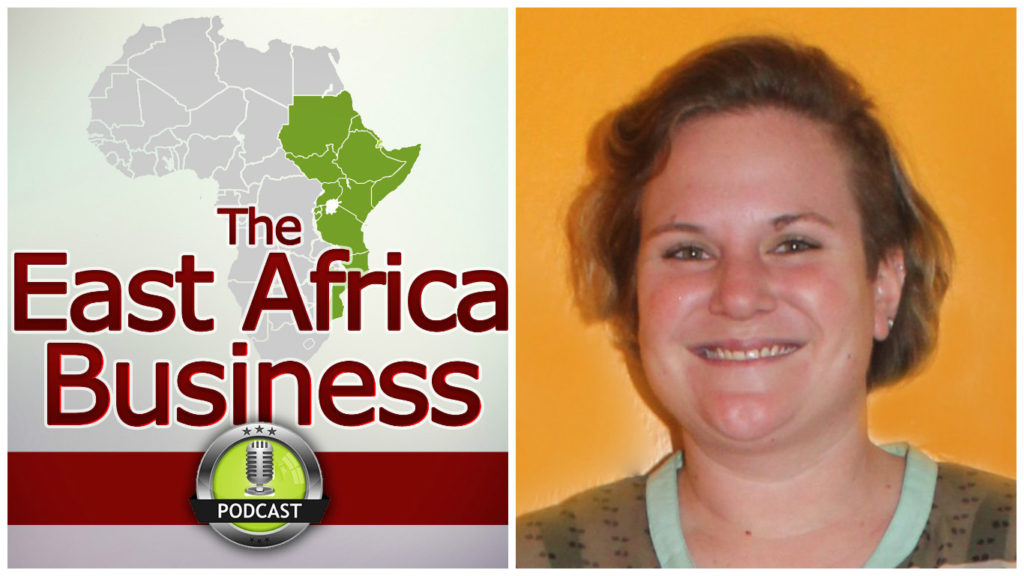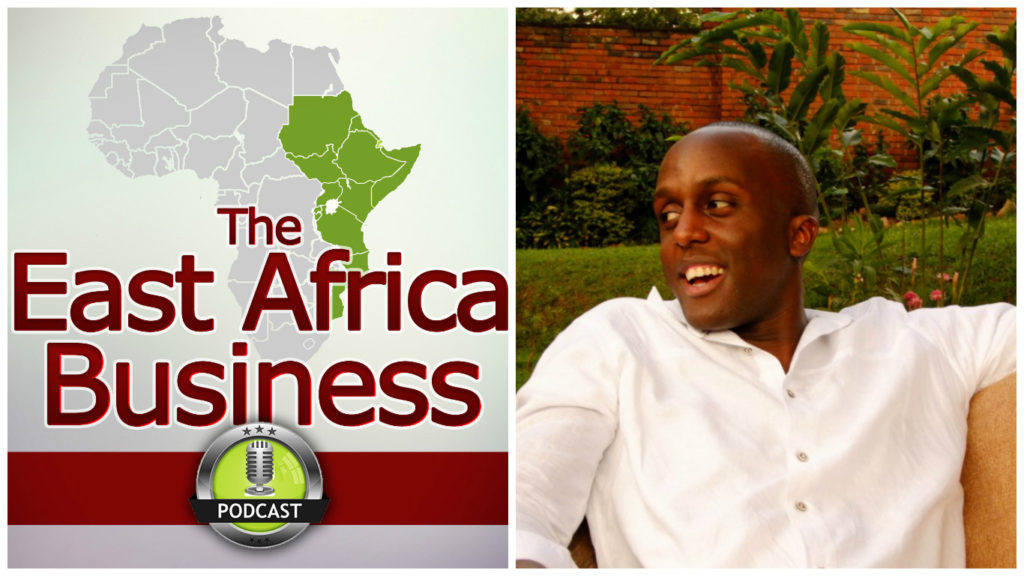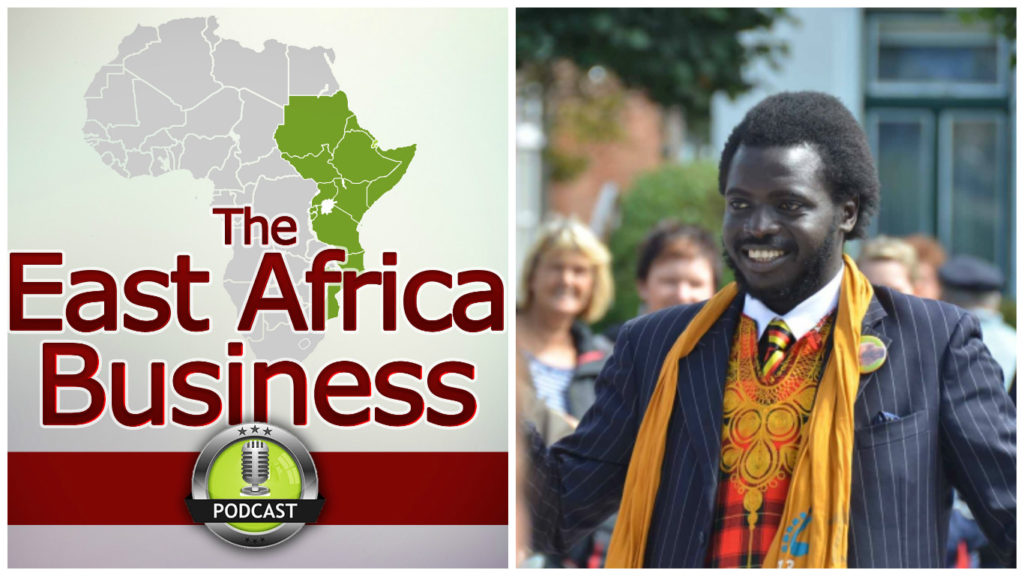Overview
This week we’re speaking with a big player in one of Kenya’s largest industries: flower farming.
Horticulture is one of the biggest sectors in the country’s economy, and 60% of all the world’s roses are grown in Kenya.
This is for a number of reasons, which I discuss with Director of Sian Roses, Chris Kulei.
Kenya has a number of natural features such as high altitude, and access to water which, along with low labour costs means they can produce roses for a tenth of the price of elsewhere such as Holland and Israel.
Before our interview, Chris took me on a tour of their 45 hectare farm just out of Nairobi going from the initial grafting of new roses, through the various stages before being picked, packed and put on a pallet for export.
You can see some pictures of this by heading to the show notes on www.theeastafricabusinesspodcast.com
The overarching concept with growing flowers is that it’s a volume game.
The global market, which is centered in Holland, is incredibly efficient and means margins for flowers are very thin, and millions of stems are traded every day.
As such, companies like Sian Roses need big capex and efficiency savings to stay competitive. Indeed, they currently focus just on roses in order to maintain a high quality.
We discuss the many players in the global supply chain, how very often they’ll get to name a new rose, trends in the industry towards sustainability, and how Brexit is causing all kinds of confusion at the auction house.
There’s so much interesting stuff here I really hope you enjoy.
Sign up below to hear whenever there are new stories and episodes released on the podcast
Pictures from the farm
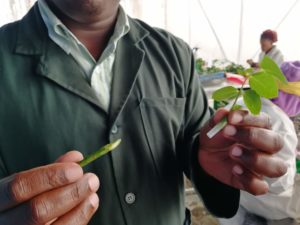
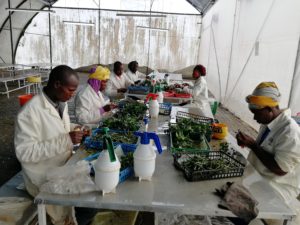
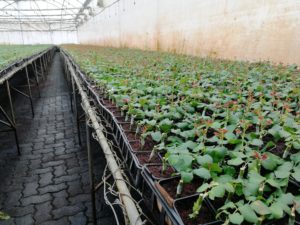
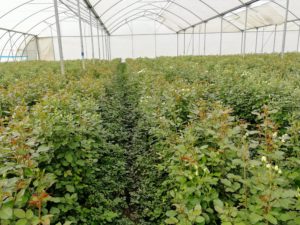
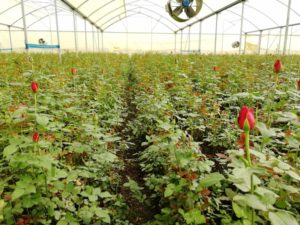
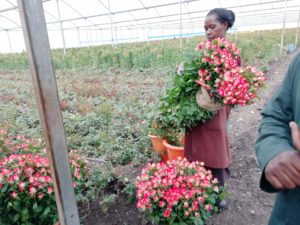
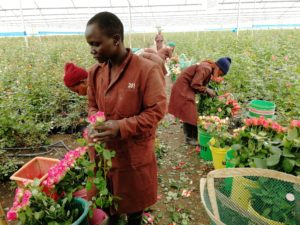
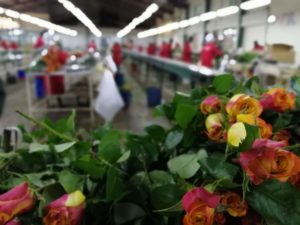
Demonstration of the flower auction (video)
Links
BBC article about the Kenyan flower industry featuring Sian Roses: The World’s Biggest Flower Market
Flora Holland: https://www.royalfloraholland.com/en/about-floraholland/visit-the-flower-auction
Website: http://www.sianroses.co.ke/meet-the-team.php
Facebook: https://www.facebook.com/Sian-Roses-361131693974541/
Twitter: https://twitter.com/SianRosesKE
LinkedIn: https://www.linkedin.com/company/sian-agriflora-limited/?trk=ppro_cprof
Transcript
Sam: 00:00:07 Intro.
Sam: 00:02:47 Cool. So we’re here today with Chris from Sian roses. Chris, welcome to the show.
Chris: 00:02:51 Thank you.
Sam: 00:02:52 So to get us started, can you tell us a bit about you and a bit about Sian roses?
Chris: 00:02:56 Okay. My name is Chris Kulei. I’m the director of a Sian roses, a group, a group of flower farms. So we’re three farms at the moment. We’re currently building our fourth totaling 120 hectares of greenhouses in Kenya. So the oldest farm is in Nakuru, which was started in 94. It’s called Agri-flora and is at an altitude of 2,150 meters. Then the next farm is Equator flowers in Eldoret, which is 2200 meters and was started in 97. And we are currently in our newest well our newest farm for now, which is Maasai flowers in kitengela, just outside Nairobi at 1,650 meters and is only 10 years old.
Sam: 00:03:52 Alright.
Chris: 00:03:53 Yeah.
Sam: 00:03:53 And you just do roses.
Chris: 00:03:55 We just do roses at the moment. We’re in the final stages of getting the licenses to start our fourth farm, which will also be in Eldoret, which will initially be non roses. So summer flowers, carnations just products that work that a lot of our customers buy at the moment, but we’ll also appreciate to buy from us directly.
Sam: 00:04:19 Fantastic. Cool. We’ll sort of get into sort of the, the mechanics of how the, how the business works and things, but I was wondering could you just sort of paint a bit of a picture of flower farming in Kenya? I’ve sort of, it’s, it seems to be quite big industry here, could you help to sort of give an idea of the scope or the size of sort of…
Chris: 00:04:37 Sure. So flower farming in Kenya really boomed, has been booming from since the 90s. There were some early farmers before that, like the Assyrians of the world in Naivasha and so on. But since the 90s, the flower, the flower industry, especially Rose growing industry in Kenya is really boomed. I think we’re close to 3000 hectares in total. Don’t quote me on that, but I think we’re close to that if not slightly above. And we are the world’s biggest exporters of roses.
Sam: 00:05:11 How many, how many hectares of roses are done?
Chris: 00:05:16 I couldn’t say off the top of my head, but the Kenya it’s got the point that in Europe, if you’re buying a Rose thenbut 60% I think are now Kenyan roses,
Sam: 00:05:28 Wow.
Chris: 00:05:28 Yeah.
Sam: 00:05:31 Where would they, where would they have been grown before? Or is this, it is all new supply?
Chris: 00:05:35 So it was, a lot of it was grown in Europe and in Columbia as well. And Ecuador. And still there’s a lot of Colombian and Ecuadorian product. And Israel of course. But,since the Kenyan, because of the mechanics and the costs of growing in Kenya, we are, we have perfect conditions, altitude, lots of sunshine, good amounts of water. We can grow roses and cheap labor. We can grow roses at about a 10th of the cost per square foot of Europe.
Sam: 00:06:09 Alright. So there are like optimal conditions to grow a rose and places like Holland, Israel, they’re having to artificially create those conditions or like have to, you know, having to pay to create those conditions to grow them. And that’s adding to the cost.
Chris: 00:06:26 Exactly. Yeah. So in a, if you go to a glass house, so we grow under plastic with steel frame greenhouses. In Europe they grow in glass houses, especially in Northern Europe, like in the Netherlands. They, they developed mass, mass production of roses and flowers, but they have to pump carbon dioxide into the greenhouse, into the glass houses. Now they have to heat them and they have to add light and light them for to add extra hours. They do produce a very high quality product. And it’s priced that way, but fortunately in Kenya, we don’t have to do more. We don’t have to do any of that.
Sam: 00:07:08 Okay. So Kenya has some conditions which make it conducive to, to growing roses? Was there any particular thing that happened in the 90s, which meant suddenly this is going to happen?
Chris: 00:07:21 If it was a lot of the, well so Sian itself, the story started because my father was on a state visit to Israel and was on a countryside tour and saw the greenhouses in the, in the desert.
Sam: 00:07:36 Israel historically has been.
Chris: 00:07:37 A very big grower.
Sam: 00:07:38 Okay.
Chris: 00:07:39 And when he saw that they were able to grow in the desert, that was his and a few of his old friends, their inspiration. And what happened was back in the early nineties and late eighties the regulations around the industry were nonexistent because the industry was in its infancy. Just kind of like how M-Pesa has become a runaway success. It grew, you know, under the radar and to what it has become without regulation, without too much. And it was the private sector that developed it. So it was the same for the flower industry. There were very, very little to no taxes on most of the inputs and most of the most of the inputs and mostly,equipment and,things you needed to import to build the greenhouses, the pump systems and everything. And that, you know, in that, in that space, everyone was able to grow quite quickly. And also there was a lot of funding,from Europe itself. Our farm in a cruise had a French development funding,to start it at the beginning.
Sam: 00:08:48 I see. This is sort of development funding as opposed to further down the supply chain?
Chris: 00:08:55 Yeah.
Sam: 00:08:56 So it’s not like the buyers were financing the, the Dutch government, the French government were saying this is a good industry to develop in Kenya.
Chris: 00:09:05 Yeah,
Sam: 00:09:06 Therefore, we’ll fund it.
Chris: 00:09:07 It was quite attractive because it brings massive acute employment. We’re now, we direct, we employ about 2000 people as Sian. And across the industry. It’s a couple hundred thousand are directly employed in the flower business. And then obviously beyond that, the, there are employed by suppliers. It, I think it has to, It’s close to half a million people.
Sam: 00:09:30 Yep.
Chris: 00:09:30 Yeah.
Sam: 00:09:31 Got it. Okay. Of course that sort of really set, set it off. And then how does the market look? Are there sort of several big players?
Chris: 00:09:40 Yeah, so we had Sian at 120 hectors are in the top 10, but we’re about, we’re no where the biggest are a couple of hundred hectares, I think two to 300 hectares.
Sam: 00:09:51 Is that how you grade the size of a flower farm, a flower company is by the number of factors?
Chris: 00:09:57 It’s usually that hectors and a greenhouse.
Sam: 00:09:59 Okay. So there are, cause it seems like there might be quite high barriers to entry.
Sam: 00:10:07 The barriers to entry. Obviously it’s a very capital intensive business. I mean there are a lot of summer flowers are not, are not, a lot of non roses are still grown outside and are still very profitable. But for the rose business, which we many have concentrated, it is quite a barrier to entry because of the expense of putting up these greenhouses, you could be charged quite a bit per square meter to have a turnkey, which is the plastic frame and the irrigation system. Fortunately there are quite a few companies in Kenya that do supply them and give very good credit terms. But to be reached the level to be able to get those credit terms is not always that easy.
Chris: 00:10:46 I see. Okay. So if you were a new, let’s say I wanted to go and start a flower farm and that’s your, what would you say is the minimum number of hectares I’d need in order for it to be worthwhile?
Chris: 00:11:01 For roses, if you, if you, it depends obviously on new business model as well. If you are going to be an auction farm, I mean there are very successful farms as small as five to 10 hectares. We Have just been growing gradually throughout the years. That’s why we reached 120 hectares. And fortunately we also had land that was available with water. Cause you know, first the first question is do you have land? Second question is, do you have a water? Third question is, do you have power? There’s one or two farms that do work with solar and, and generators and on hydro. But it’s still a very important key factor when you see how much you have to invest in cool chain and pumping.
Sam: 00:11:47 Okay. Yeah. So what would, I know this is almost a, could be a random number, but are talking sort of like tens of thousands dollars, hundreds of thousands of dollars, millions of dollars?
Chris: 00:11:58 So hundreds of thousands dollars to start, to start a small farm, millions of dollars for anything above like 10 to, earning above about 10 to 15 hectors of greenhouses, you’re talking millions of dollars.
Sam: 00:12:11 Okay. And basically roses, it, it needs to be in greenhouses
Chris: 00:12:14 Generally. There are some varieties. The interesting thing about roses is it, there’s no one size fits all, even in greenhouses. There still roses that prefer to be in soil rather than hydroponics. They’re roses that can grow and do very well outside. And a lot of the European market, especially in the summer is outdoor grown, outdoors roses from places like Germany, England that will only come in in the summer.
Sam: 00:12:43 I see. Okay. Got it. Cool. Okay. So that’s kind of like a good, I feel like I’ve got quite a good grasp now of sort of the, the industry should be saying sort of how it’s all been set up. So we’ve, before doing this interview, we’ve gone on a, on a sort of tour through through the farm and started off from the very first when we’ve got the starting growing new roses and you know, all the way through them being, I’m gonna forget all the words now, propagated, gosh is like school test isn’t it, propagated and then the being began to be to be grown. And then there was bending just sort of in part to give a quick overview summary of like what, what it takes and sort of some of the times that it takes in terms of like growing a rose.
Chris: 00:13:31 Okay. So we, at Maasai and in Sian, we have our own propagation unit. So not all farms do this. So what happens is, we try varieties, we receive, we go to the breeders. So the way the rose, the rose industry works there are very quite a, quite a few of these companies are quite old, over a hundred years old. And they have been developing and breeding roses, which means they have been, when you see a red Rose, it’s, there are hundreds of red roses as you mentioned. And when we’re walking around just like wine, there’s hundreds of great different varieties. And so what you’ll do is we go to the breeder and we see a rose that we kind of like the look of. So we’ll say it’s a nice yellow when we’re in our farms and in our product line we need a strong yellow. So take book can I make an agreement to trial them? We’ll bring plants to our farm, they send us them in potter plants, we’ll plant we’ll grow them in in our farm under different conditions for about six months to a year. And then at that point we’ll make an agreement with the breeder who has the IP rights, intellectual property rights for that product to grow a larger area. And we’d work in square meters. So usually minimum of a quarter, a quarter, Hector. So 2,500 square meters to, if we really love it, then we could technically go even 10. And what we will then do is we cut out a big part of the cost of starting to grow a variety by propagating ourselves, which means we take the, the roses that we have in the ground and from each and we harvest the stems and from each stem, we’ll get four cuttings and those four cuttings we graft to indigenous to wild grown roses, which are also cleaned and disease free. And we’ll produce our own, as you said, as you said, an apartment propagation unit. We’ll produce our own plants.
Sam: 00:15:30 So this is basically like your fusing the two,
Chris: 00:15:34 We’re fusing the two.
Sam: 00:15:35 And so, and so you’ll get like a small sample from these breeders. So the first thing which I knew to get my head around was there’s not just one type of rose. There are like hundreds of types of roses and there’s always new roses being, being developed from new colors and new times, et cetera. So you’ll get these samples, let’s call them from the breeders and you’ll say, okay, this is a good sample. In order for us to do this at scale, we need to dedicate this, you know, the space in the greenhouse to grow it. But we need to find a reliable way to grow those roses ourself. And this value is like, it’s not that you just take the sample and you put it in the ground and you grow up, you actually fuse it with best wild rose saying, which is basically gives it, it’s kind of like giving good . Is that right? Yeah,
Chris: 00:16:25 It’s stuck. Yeah. It’s basically putting, you know, it’s taking the head of, of a genius and putting it on the body of an athlete to find yourself the perfect person kind of thing. So we are the, the, the head of the row, the, we produce, we want to produce as many positive or many stems from the flower at the best possible cost because this industry is very tight margins. The reason why we’re 120 hectors and other players are much bigger is because it’s, it’s a matter of scale. And so if you can manage your costs from the beginning by propagating yourself, which we actually originally started because this farm was built very quickly. Maasai was, went from from zero to 20 hectors in two years and then from 20 hectors to 42, almost 40 after the fourth year. So we realized we’d have to spend so much on plants and we do, we do an average of about eight plants per square meter. And on 400,000 square meters, you’re talking about a huge number of plants and each plant is costing about 30 30 cents or so 30 Euro cents or so. So it saved us a lot of money by actually building this unit ourself. And then as a result, and once we finished, we are consistent. We’re continuously replanting throughout the group, an average of 5% to 10% each year will be replanting. So we have a constant need for plants, whether we’re planting the same variety. Again, we still need new fresh plants or for planting new varieties. We still need fresh plants. So our propagation unit is generally has a flow. And as you saw, we also doing other products like macadamia paw paw papaya avocado. We’re doing tree seedlings for our farms. It’s, it’s basically a unit that can and can also do vegetables. So I’ve, I’ve taken an old greenhouse and old test greenhouse, put it in my garden I’m hoping to grow my own vegetables and not embarrass myself as a farmer by being not able to grow
Chris: 00:18:40 Green fingers. Okay, cool. So this, this propagation unit, It makes it sound quite sort of like a, I don’t know, the CIA or something. Propagation unit. Right? So they, you’ve got this infrastructure now where you can take, you know, take, take the samples, graft it to the to the wild. Where’d you get the root-stock? So the root-stock, there are a few suppliers here in Kenya who also supply because they have to give your whole, they supply clean root-stock. Cause obviously that’s key to avoid having disease in the plant because the worst that you can have is a plant that’s producing 10 to 15% less throughout the life of it, throughout its life because it was the, it was dirty root-stock in the first place. So there’s a few guys in Naivasha that we can go to, to get supplies. They develop it themselves.
Sam: 00:19:30 Okay. So they developed this clean,
Chris: 00:19:33 Rich stock.
Sam: 00:19:33 You said? Yeah. Okay. Got it. Okay. So you’ve got that in, then you do the, the fuse thing. So you fuse the two together and then, then they’re basically on the road to grow.
Chris: 00:19:45 Yeah. So they keep them in the perfect conditions with different levels of humidity. They grow them in a, in a very nutritious growth media. That’s sterile. That’s, sorry. That’s clean.
Sam: 00:19:59 And media we said is like the, the environment. It’s like the soil, the catch all term for like the soil.
Chris: 00:20:05 Yeah. The, what they, what they planted in and the media, the growth media with a bit of fertilizer and coconut.
Sam: 00:20:15 Any, any reason why it’s coconut?
Chris: 00:20:17 They said well the, what the team says, I’m not a technical expert, but what the team say is it’s that it’s, it’s clean, they’ve cleaned it themselves, but also it doesn’t it’s inert so it won’t carry any disease. And then on top of that, it drains well cause it was thing for the rich, the root structure when they’re trying to establish is just stagnant water.
Sam: 00:20:43 Yeah. Yeah. And how do they, how does the team know that? Do they…
Chris: 00:20:49 A lot of knowledge. A lot of knowledge for the industry and for these kinds of techniques has come from Israel, from developed, from techniques developed in Israel, in the Netherlands. And they’ve come and we have a, we had, we’ve always had a consultant, independent consultant that works with the farm. So we had a guy who worked with us for a very long time as we built this farm. And we recently changed to a French, the gentleman who is very, very good. And that’s where we get all this knowledge. And one of the great things about the industry is that I’m able to visit quite a lot of farms and quite a lot of people able to visit us. So you learn quite a lot. So other people have propagation units, other people who are growing the same varieties, other people who are in the same market. It’s, it’s generally an, it’s generally quite a transparent thing cause we can go visit each other.
Sam: 00:21:43 Why’d you think that is? What I mean, what, why are people quite open?
Chris: 00:21:49 Maybe cause we’re all in this together. There’s Kenyan farmers, Kenyan growers that, there’s also as the flower industry is dominated by the auction and the auction houses in the Netherlands for Holland. And that’s a very it’s a very open and transparent system. So we pack our flowers, send them to the auction, especially when we first started, everything went there. And we had and we as members of the auction and sellers were able to access and watch the prices every day and that everybody in the industry who sells in the auction has that same access. So as we were, as this morning as you saw, we could see our product, we could see our neighboring farms product, we can see the Ethiopian product and also the local grown product. And through that you can find that, you can find out number one, who else is growing the same as you. And number two are prices you’re getting. And unless they are, there are obviously some people that it’s not always easy to go to their farms, but generally it’s a phone call to say, can I come see you? We’re doing the, say we’re doing the same product half the time, they’ll be open to it.
Sam: 00:23:04 Okay.
Chris: 00:23:04 Yeah.
Sam: 00:23:04 Nice. So we’ve got the, the propagation. So they are then in the small form, they’re in the little pot. Next what happens?
Chris: 00:23:17 Next they go to hardening. So after they’ve been in these high humidity conditions for about 30 days to 40 days, they’ll go into hardening, which is now it’s almost like a normal greenhouse conditions. So there’s good airflow, it’s cooler, it, the area’s not heated and there’s no, and we’re not fogging to keep humidity high. So from that point you, we assess the plants and then the ones which are the strongest are sent out to be planted.
Sam: 00:23:48 How do you determine how strong the plant is?
Chris: 00:23:50 So they look at the conditions of the plant, the, the shoot that’s come up from the, from the grafting, they look at the leaves. And from that they can, the team on the ground are able to say that with good confidence that this will, has a highhigh potential of success. What do you practice?
Sam: 00:24:12 What’s your call rates? Normally.
Chris: 00:24:13 90% is the 90% plus needs to get through, I mean, ideally we would want 99%, but these are living things we have to have. You know, if a guy comes in and hasn’t really cleaned his hands properly, then…
Sam: 00:24:28 There’s a chance that something got in and can, yeah. So they get it, I mean once they, once they’re, once they’re through this sort of probation period. So I confused and say propagation and probation. Once they’re through this sort of like hardening phase then they go to…
Chris: 00:24:45 They go out to the field to get planted. So the…
Sam: 00:24:48 We say the field, this is still under a green…
Chris: 00:24:50 Still greenhouse and to the greenhouses, they’ll plant them either in soil, which we have about 60% on this farm, but most of the farm is most our other farms are hydroponics. So hydroponics is a closed water system where the plants are, the roses are planted in it’s called pump in pumice, knowing volcanic stone, which is, again which is cleaned, it’s steamed and then it’s cleaned before starting…
Sam: 00:25:23 The steam is sort of. The ash is steamed.
Chris: 00:25:26 Yeah. We have to steam. We have here, we have big machines in our other farms which can steam and make sure the, cause, so we can recycle it as well. So then we’ll put, they’re put in beds, raised beds with a, and the beds are filled with the stones, the very tiny like stones and volcanic stones. And then the plants are planted and they are completely fed and they can totally depend on hydroponics to grow. So the fertilizers, everything that they need comes through the water and the irrigation system and it’s a closed system. So whatever excess water is piped through to reservoirs and then it’s recycled throughout the system.
Sam: 00:26:10 Is that the ideal, is that what you kind of want to be getting to where everything’s always used or is that, is there downsides to it?
Chris: 00:26:17 It depends on the farm. Some farms like will go to and they have a, like our farm in Nakuru, there are a lot of other farms around them and our neighboring farms don’t have any hydroponics at all. They plant in soil because at the end of the day a rose and a plant is supposed to go in soil and some, and you know, there’s no one size fits all. We went hydroponics to be honest, I’m not 100% sure why but it seems to, it gives you more control, slightly more control over the product, but you are really dependent on having stable supply of water and clean water as well.
Sam: 00:26:56 So if, for example, the, there was some event, which means that the water, there’s no water, would that basically just break the, close to break the system?
Chris: 00:27:06 It would break the hydroponic system. They need water to be watered every single day. For pants in soil, especially very healthy soils with good biological content and water retention can hold up, a plant can last a few days, a week. Some guys say can last 10 days with very little to no water.
Sam: 00:27:26 Okay.
Chris: 00:27:27 But you know, there’s a balance of does hydroponics produce more? But do you have a healthier plant? It’s a very big debate between different farms.
Sam: 00:27:37 Are there like some quite vocal people in the industry who are like very pro hydroponics.
Chris: 00:27:42 Yeah, definitely.
Sam: 00:27:44 Are there some heated debates.
Chris: 00:27:47 Debates of the industry are a bit more interesting than hydroponics versus soil planting. But there is a debate. Yeah.
Sam: 00:27:52 All right. What are some of the more interesting debates?
Chris: 00:27:55 Traits of varieties chemical uses and things like that? Also to be fair at the moment, the industry has a lot of external issues that are affected, such as, you know, labor pay rates certification certification issues, well, not issues, but the amount of certification that’s needed. Those are the, the real things that worry us.
Sam: 00:28:23 Yeah.
Chris: 00:28:23 Yeah.
Sam: 00:28:23 Okay. Well perhaps could come on a little bit later. Okay, so actually one thing on the different types of roses I was going to, you can just name a rose. If you, if you’ve got a new, s new type or you, you’re able to like make a new variety or, or if you get a, you tell me.
Chris: 00:28:43 Yes. Yeah. So the way it works with the trials is they are numbers. They, each breeder will give them numbers.
Sam: 00:28:50 One, two, three, four, five.
Chris: 00:28:51 Yeah.
Sam: 00:28:51 And the next one, one, two, three, four,
Chris: 00:28:52 It’s usually a number. Yeah. And so on. So they can kind of track it, obviously track it themselves. Because to name it there’s a whole trademark process and a registration process that they have to go through. So you don’t really do that until you know, you have a flower that will succeed or will grow. I will be X, we’ll be grown by the growers, which is us. So sometimes with some breeders, if we, and we constantly have trials in each farm, we have about a Hector of about 10,000 square meters worth of trials at any given time. This farm actually has a bit more and through that process we get to identify which flowers we like and what we want to grow. If it’s still a number, some breeders will, you can contact them. Say, we really like this one. Does it have a name? If they say it doesn’t have a name, some breeders will be open to you coming up with a name with them.
Sam: 00:29:45 What are some names that you’ve come up with?
Chris: 00:29:47 So it’s quite soppy, but we’ve named two varieties recently after the granddaughters of our, the youngest granddaughters of the two chairman of the group and my father and my uncle. Yeah. So Nelani which is named after my brother’s daughter and Olivia, which is named after my cousin’s daughter. Yeah.
Sam: 00:30:08 We’re gonna say anytime. Does that mean anywhere in the world? People would have an Olivia?
Chris: 00:30:14 Eventually if we’re hoping Olivia and Nelani succeed the way the other words do, we hope, number one, that number one, that it will succeed. Are we everywhere? And another good thing about it potentially is that they are semi exclusive to our farms. So it will also be guaranteed that it’s from our farm.
Sam: 00:30:32 Wow. Yeah. How does exclusivity work? So do you basically get the rights to?
Chris: 00:30:36 We agree with the breeder that we have wrote first writer refusal. So when a flower is, it looks like it’s going to be a successful flower, the breeder will often have a release policy. They don’t just flood the market because then they don’t they number one, they may do well themselves because they’ll get lots of royalty payments cause we pay for the rights to produce their flowers. But it won’t always be great for the grower because if there’s a huge amount of that product the price I will get, I can’t get as good a price as I’d hope because the buyers know there’s 10 other farms that are growing it. So what the breeders often do is they come up with a release policy and they work with the, those that have trials and those that are interested initially to come to agreement on the areas that they will say they’re only going to release 20,000 square meters of this product per year. And the breeders actually do monitor this by visiting farms and counting the number of plants and working out how much each farm is growing. We all have to be honest about that. And so we at Sian group will work with the breeder and say, we really love this flower. We’d like to take half of your total production and with the rights, take half your total production for the next three years.
Sam: 00:31:58 Okay.
Chris: 00:31:59 And then the rest and whoever else has the plants and has the variety already in soil already in growing, we’ll also say whether or not they agree to it, whether or not they want to do it. And then you make a deal between you as farms and with the breeder.
Sam: 00:32:15 Right. And it talking about the royalties. So do you, is there like an upfront cost to say, right, we’re going to buy the rights for this for a few years,
Chris: 00:32:26 Few years? I mean, when you do pick a variety, it’s a 7 to 10 year bet. So the breeders worked. So the life of the plant is about 7 to 10 years and not all breeders work exactly the same way. Some ask you to pay per plant and it’s offered, it’s a cost that you pay upon planting.
Sam: 00:32:49 Okay.
Chris: 00:32:50 Some breeders will ask you to pay per square meter, square meters, per Hector and some breeders will actually tell you to pay per square per Hector on a subscription basis. So it’s it’s again, with, as with varieties, no one size fits all, we have to go and sit down and make the agreements with them because you can’t, you can’t I can’t say enough about how hard it is and how much work these guys put into getting to a stable like red Rose. The amount of time and the amount of the amount of time and effort it takes for them to get to a point where we as growers come in is incredible. And if you ever have the opportunity to visit a breeder, it’s incredible cause like they we, there’s like a variety called Athena, which is a very popular white. It’s grown in large areas pretty much at all farms, but it, the original flower is I think it’s in the Netherlands, no, it might be in Germany, but it’s, the original flower and the original plant is just one or two that looked quite looked like they had the potential to be a strong rose that they, the breeder developed I think 10 or 15 years ago.
Sam: 00:34:04 Okay.
Chris: 00:34:05 And now there’s, if you go on the auctions, if you go to most places in Europe, a lot of the roses you’ll see, white roses you’ll see are Athena.
Sam: 00:34:13 Really? From this Adam and Eve.
Chris: 00:34:15 Yeah. From this mother plants. That is, that is, yeah.
Sam: 00:34:17 No way, okay. So then you did that and then so the commerciality side of it is you will are you paying up front for that or is it like are you paying each.
Chris: 00:34:27 It’s, it depends on the breeder, some, some do ask for up front, some will take it off in stages over the course of a year, so that they also give us the opportunity. The great thing is most breeders or most all breeders work very well with the growers. So they give very good terms, we’ll have time of the course of a year, course, of a eight, six, 18 months to pay the royalty
Sam: 00:34:55 And your thought process here is if I’m the first one to have the Olivia Rose, I can then charge a premium or I can then get a high price for it, which will more than pay off.
Chris: 00:35:07 Exactly. Exactly. Because from plant, from planting to harvest is can’t remember. I think it’s a couple of, it’s two months, I think two to three months. And if you’re paying your royalties over the course of the next year, you’re at least getting your income from that product. By, getting some income from the product by the time you’re having to pay off, pay for the right to grow.
Sam: 00:35:32 Got it. Okay. So roses are in the, they’re in the ground, they’re growing, and you said that they last for about seven years, so each time, say how often are they picked?
Chris: 00:35:45 Yeah, so the, it’s called a flush cycle.
Sam: 00:35:49 Flush.
Chris: 00:35:50 Flush cycle. And basically some flowers at this farm, every 33 days we’ll harvest, we’ll harvest the stem from the, from the plant. But then on other varieties and depending on altitude, it can go up to 60 to 80 days. But we work on an average as a group of about 45, I think 45 to 50 days. A flush cycle. Yeah.
Sam: 00:36:15 And then more or less the quality is consistent?
Chris: 00:36:18 More quality is as consistent as possible because our buyers and the auction, especially, they appreciate and will, you’ll get a premium on the auction for being consistent, for having the same number of stems Monday to Friday for sale. Okay. And the same quality.
Sam: 00:36:40 They get picked. And then, then what happens?
Chris: 00:36:45 So they get picked and then in the field they’ll do a bit of a grading where they’ll be put into buckets with water, with a feed, with a post-harvest solution that…
Sam: 00:36:57 That’s like some water with some chemicals?
Chris: 00:37:00 Exactly. Water with A bit of chemicals so that they can make sure the plants, the rows and what it drinks will be clean to extend the life of the flower. So they get put into buckets and, I know we have a system here where we have a CRM where we record the harvest.
Sam: 00:37:22 Things like customer relationship management system, like a database system that tracks.
Chris: 00:37:28 That tracks as much as possible so that we, and then they get collected by tractors and are brought to our cold store because the cold, the cold chain is vital to the, the life the vast life of the rose. The sooner you get it from the field into the cold room and where the cold rooms, they sit for a minimum of six to eight hours to bring the temperature down. The sooner you bring it to the cold rooms, the better, the, the better for the plant.
Sam: 00:37:59 This is like next to these greenhouses?
Chris: 00:38:02 There’s, it’s a central location on the farm generally. So this farm was developed because it’s a newer farm, was developed with the pack house and the cold rooms at the center. So not, it’s not too far. But in one of our other farms, I think it’s one and a half kilometers to, it’s, it’s a, it’s a central location. And because this, because there’s so much coming in, it has to get in here as quickly as possible and as efficiently as possible.
Sam: 00:38:30 Good.
Chris: 00:38:30 Yeah.
Sam: 00:38:31 And then, so it’s in the cold in the cold room and then packed up?
Chris: 00:38:36 So in the cold room and then it gets, after it’s down to the right temperature. So below five degrees it goes into theinto the packing, into pack house, which is obviously part of the same building. And what they do there is we have our orders, what’s going to the auction and we know what’s going to our direct customers. So at that point they get graded and sorted they’re put into into sleeves. If they’re going to auction. We have branded sleeves.
Sam: 00:39:07 Sleeves are like cellophane?
Chris: 00:39:08 Cellophane sleeves. We have branded sleeves in the auction because we need people to see that it’s a Sian product. And then for our direct customers, they often have their own requests, whether it’s their own sleeve whether it’s just a transparent one. We put in it’s called SFK, which is a paper corrugated paper protection around the heads and then they’re packed into boxes, cardboard boxes, which again are branded of course, because we need everyone to know that the flowers are from Kenya and from us. And then they’re pileed in and then they’re taken to the export cold store where they’re kept until they’re ready to be loaded onto refrigerator trucks, which then drive them to Nairobi airport. Cause all, the whole flower industry is almost all roses are air freighted. Okay. Well from Kenya or as air freight.
Sam: 00:40:01 Yeah.
Chris: 00:40:01 Yeah.
Sam: 00:40:02 Cool. Okay. So that kind of gets us there. So there’s, so basically, we, what we’ve spoken about there is going from a little bit of a little chopped up bit of rose all the way through to propagation, hardening, growing, et cetera. And then you say that, and that sort of can take 45 days. Is it 45 days from half?
Chris: 00:40:21 45 to 50, I think.
Sam: 00:40:23 Yeah.
Chris: 00:40:23 I think so. Like.
Sam: 00:40:25 Okay. It’s that sort of, and then repeat, repeat, repeat. Okay. that’s all a bit about where the flowers go then. So you sort of mentioned the two destinations at the auction or this direct to customers. Can we perhaps talk about the auction first. Okay. Yeah. So yeah, so in Holland,
Chris: 00:40:46 Yeah. So the auction is actually really fascinating and I really encourage anybody to try, if they ever in a Schiphole, to try have some time to go check out flora Holland, which is next door. And is the reason why Schiphole is part of the reason why Schiphole is such a huge airport. So flora, Holland the auction in, next to Schiphole was called…
Sam: 00:41:11 Flora Holland is a company…
Chris: 00:41:12 Flora Holland is a…
Sam: 00:41:13 This international flower.
Chris: 00:41:15 They are the world’s biggest flower company and they, it’s a corporative. We’re, as Sian roses, are a member, we as sellers and they are the world’s biggest flower company. And also the, their auction, which is one of three big ones they own in, in Holland, their auction next to Schiphol airport is called Aalsmeer and is one of the biggest buildings in the world, I think. But the Boeing factory and maybe one other are only the only two buildings bigger in, in terms of floor space. Yeah. And so our flowers go there. By air for the auction every night and are unpacked, put in buckets with water. And then, traditionally it used to be an auction where people would physically sit in these big halls depending on varieties of flowers. There’s, I think, I can’t remember how many clocks, there’s so many. They’re called auction clocks and those, the rose rooms, they have 2 at Aalsmeer, they have one in Naaldwijk and one in Rijnsburg, which are the three main auctions. And the buyers would sit in these big halls and would they would be put on trolleys and they would see the flowers. They’d go inspect them before buying, before the auction opened, and then they would go and buy them according to the price that they feel that they’re worth.
Sam: 00:42:34 Yeah.
Chris: 00:42:35 And it’s a, it’s a Dutch auction so it starts high and goes low.
Sam: 00:42:39 Yeah. This is to me why, let’s get my head around because we watched it on, so historically it was a room. Everyone goes and sits in a room and they say, right, we’re now bringing on Sian roses, Sian Olivia roses, we’ve got 200 buckets to sell. He wants to buy them. Now that’s all electronic.
Chris: 00:42:58 It’s all digital.
Sam: 00:42:59 And so we, we were, we were sat in your office and we were just on a web browser watching a live stream event happening. It’s fascinating that we said that. So each one can, and it’s really quick.
Chris: 00:43:12 I’ts very very fast
Sam: 00:43:14 Now my understanding of an auction is there’s a painting or something or something you want to buy and someone says he will give me a hundred, 150, 140 or 150, 200, 220, going once, going twice sold. This one’s different. So how does this one work?
Chris: 00:43:34 So this works the opposite direction. It starts high and goes low and you and the buyers basically have they have a registration number and a button that they get to press at the point where they feel it’s worth. So it usually starts at Euro or something or Euro and will come back down and this price per STEM, and It’ll come down to the point that they, and it’s a very interesting cause they’re making that calculation of what the demand is for this product, for this, for this color, for that specific Rose. If someone’s really asking about specific rose, what they are willing to pay and what they’re willing, what they think they will get from their customer and what they usually do. And at that point they’ll press the button. And if someone presses it very early, then the, then the, everybody starts buying from that point and it can still drop a bit. But if it’s a lot, a lot of product you have to get in to get what you need because you have someone in mind in generally they have someone in mind generally for that rose.
Sam: 00:44:34 And so the idea is it’s not one person buying everything. So let’s say there are a hundred buckets, you know, someone might buy 30 buckets at 35 cents, the next person buys 25 buckets.
Chris: 00:44:46 Usually the same 35 cents. And then generally if it’s that now it will generally go all at 35 cents.
Sam: 00:44:53 Okay.
Chris: 00:44:54 Yeah.
Sam: 00:44:54 But it might be some where it says still have 20 left. They might get bought 28 cents.
Chris: 00:44:57 Yeah, it might still drop down a bit more.
Sam: 00:45:00 Okay.
Chris: 00:45:00 And there’s an auctioneer who’s announcing each product as it comes up on the clock?
Sam: 00:45:05 And the, this honesty was taking like five seconds before they’re gone.
Chris: 00:45:10 Thousands. I mean hundreds of thousands stems are sold an hour, like per day. It’s millions of stems. In the peak periods they’ll be handling millions and millions of stems, of roses a day.
Sam: 00:45:23 And who’s buying?
Chris: 00:45:25 So the buyers are generally wholesalers and major wholesalers and anything from a mom and pop operation with, with a small, a couple of shops to, or a truck. Cause the whole industry was based on the flying Dutchman concept where the the buyers would be these traders, and they would buy on the auction, they would fill up their truck and then they’d drive to England, they’d drive to Paris, they’d drive to other parts of Germany. And then they would go and open up their truck and say, this is what I’ve got, sell out the what’s on the truck and then head back and do it all again.
Sam: 00:46:07 Yeah.
Chris: 00:46:07 And they do that as a constant cycle. But now it’s mainly large buyers, very big wholesalers that will supply supermarket chains, will supply florist chains, will supply everything from will supply everything from someone with just a single store to someone with 50 stores to a hundred stores. Yeah.
Sam: 00:46:25 And so your, so that buyer at the auction, let’s say he pays 30 cents, 30 Euro cents, what’s their mark up? What are they, what will they then sell it to the florist and then what would the florist sell to the customer? Obviously there are some barriers.
Chris: 00:46:42 I wouldn’t want to speculate because in case any are listening, but I mean they always have to make their margin and they do make a good margin because they take a lot of the,as a middleman, they take a lot of the stress and a lot of the strain of getting the supply in. Cause also a lot of them will still take them to their own facilities and add value. So they’ll, they’ll buy roses from Kenya. They’ll buy carnations from Turkey or Spain or co, and then they’ll buy orange ones from another, from Italy. They’ll buy, you know, they’ll buy tons of flowers from all parts of the world that are on these clocks in,on these, in these auctions and in the, around the Netherlands. And they will bring them to their facilities. They’ll put them into bouquets for them. They’ll put them into new buckets for them. They’ll…
Sam: 00:47:34 So it’s not, it’s not as simple as buy it, sell it. There is some, there’s a lot of work they do in between. And so that’s why that’s the USP that they can do that they have the buying power and they have the people and they do spend a lot of time coming out to visit farms to establish whether this farm can actually supply the product consistently.
Sam: 00:47:59 So auctions are. The one way you also mentioned you sell directly, so what’s the rationale there?
Chris: 00:48:05 So about, when we were initially started, everything went to auction. And the auction was a great platform because it gave us huge exposure and market access because our product that wasn’t there, if they weren’t adding value, our product would go in sleeve with the Sian logo from here to wherever in the world. It would end up through the buyers. But after a while more and more buyers were realizing that they could actually mitigate the risk of, cause they’re, the wholesalers for example, would, would have to hope that we as Sian roses and the industry in general, have a variety like Olivia on the auction every day throughout the year. And sometimes the weather can be bad. Sometimes there could be other issues. So buyers, some buyers realize that they can also mitigate that risk by buying a percentage of their product. So even these big traders, they buy, they do buy a percentage of their product by coming to the farms and making direct deals, which means that a rose, that may sell for 30 cents at the auction as a very, obviously a very nice rose that sells for 30 cents at the auction. We have fees to pay as a sellers.
Sam: 00:49:24 In order to participate in the auction.
Chris: 00:49:27 And also we pay the transport, we pay the the transport costs. So these buyers also realize that they can come to us and come and negotiate a lower price or a different price to have to guarantee continuous supply. And they would take, they would take over that they’re taking the cost of transport, which is a huge, huge part of the cost for us here in Kenya. We can produce very cheaply, but our costs of transport are very, very high. So that’s when we realized and we started building a marketing and sales team led by Yvonne, who’s worked for us for 16 years now. And we’ve built up a customer base of about 50 or 60 customers around the world who get into, who are in contact pretty much every few days, if not daily. And we’ll have we’ll pack flowers according to their specs to be delivered to Nairobi airport where they have their own ship. They have made their own deals with shippers to take it on to wherever they are.
Sam: 00:50:32 Got it. So you’ve still got the auction but you increasingly are looking to move towards this?
Chris: 00:50:39 Well I think we’ve hit our balance, we are about 70, 30, 70% direct, 30% auction. And I think we’ve reached our balance. We may adjust it depending but the, the, the unfortunate thing for us as growers is, well us as growers who are trying to do both auction and direct, cause there are quite a lot of growers that do 100% direct and there are quite a lot that do 100% auction and there’s quite a few like us who do both. And the unfortunate thing of the ones who do both is that if we do keep product on the auction, we can’t turn around and ask for a premium price for the same product because the buyers who are buying from us direct do also have are, are also members of the auction and also can see the product on the auction.
Sam: 00:51:30 I see. You can’t go to your direct customer and say start selling it at 40 cents. If they then, cause then they all taken to the auction that, hold on a second. You were selling it for 30.
Chris: 00:51:41 Exactly. They’ll know that for the past six months I’ve been getting 32 cents for this rose. But on the auction it’s been consistently on the auction is considered again 32 cents. I can’t turn around and say, right, if you want to make a deal with us for a year four throughout the year, I want 40 cents. It just won’t work.
Sam: 00:51:59 You were saying earlier this, there’s just unbelievably efficient market.
Chris: 00:52:02 Very, very efficient.
Sam: 00:52:03 Sort of the, the speed at which things are done. The transparency, yeah.
Chris: 00:52:10 It’s it’s something that I don’t think enough people realize that behind the rose that is in your local, your local supermarket, just how much has gone into getting it there, but not only that, just how efficient everything is because you also got to consider it’s gotta be kept below four degrees the whole way. Well, we try to keep everything below four degrees and there are companies that would do, we work with, we as growers and also a few of the buyers work with companies like flower watch who put in temperature sensors in a certain number of boxes in sample, sample size boxes throughout the industry. And will send you back the data of temperature at packing temperature at arrival, temperature at transport, temperature at arrival at the destination. And generally if a new generally they keep quite close to that four to six, four to six degrees. Yeah.
Sam: 00:53:09 Yeah. It seems like there’s, when we were walking around, you’re saying that, you know, adopting QR codes for, for tracking, it seems there’s lots of innovation that seems to be happening around sort of supply chain aspects.
Chris: 00:53:24 Yeah. Cause when you reach a certain size, especially like this farm if this, if we only had this farm for example, we are 45 hectors here, we are pretty much at our large as we can grow in under greenhouse without having to invest heavily in more water like a more bore holes. And so when we look at expansion, if we look at future expansion or what to do the next few years of this farm, it’s efficiencies. So if we can be more efficient with using technology. So the QR codes was for our marketing side so that we have product traceability so that if we, if the supervisor’s in the, in the pack house receive some buckets and they see there’s a problem with some buckets or the product or the product and some of the buckets, they can trace which greenhouse it came from and when it was harvested. So they can quickly, even before it enters the, into our cold stores and goes through the chain that those flowers don’t end up, three days later in Australia and our customers furious because he’s just paid all this money for it to get there. We can actually catch it quite early. The next step is things like water and water management, water resource management, which is very vital because it’s a limited resource. And using technology to manage our senses, to manage our product a bit better, to make sure that we aren’t overfeeding, we aren’t over-watering, we aren’t the water that is reentering the system. So that’s draining through our greenhouses and reentering the water table isn’t dirty. That kind of stuff is very important. Yeah.
Sam: 00:55:13 Are you seeing any other opportunities or things where you’re like, Hmm, there must be something that could make this easier, it must make this better, but you haven’t yet found it?
Chris: 00:55:24 I think the systems, the systems to help manage growing, if that is something that we had to, we spend about two years trying to find like our CRM and one other farmer has also done the same one or two other farms have also done the same. There’s just a system to help manage the product from growing to now actual like packing for export and making sure that you, your customers, you can get better customer satisfaction by being able to say when the customers order 10,000 stems of rose a, they are actually going to get 10,000 cause it is a living product. So there can be fluctuations but it’s not acceptable because our direct customers have people they’re also supplying and if you, if our direct customers supplying Sainsburys for example, they don’t want to hear that the farm that their supplier was buying from had rainstorms for two weeks. They want to, they just want their flowers. Yeah.
Sam: 00:56:24 Okay. We spoke, we spoke a bit as well about sort of accreditation. So fair trade.
Chris: 00:56:31 So we sell a lot in Europe and Kenya as a whole, as a, Kenya flower market sells mostly in Europe. And there, and they have very high standards for fair trade standards and certain certifications. They expect the product to be they used to call, there was another, there was another institution called fair flower, fair plants, fair, flowers fair plants, I think, or not. But anyway, what they want, the consumer wants to know and it’s the right thing that this flower has been grown and with minimal use of chemicals, especially carcinogens. The, the people who are harvesting are and handling the flowers are paid well, that we as a farm are not polluting the local environment by just spraying tons of chemicals and releasing that into the, the rivers that are nearby and water into the water table. And so there are a lot of certifications and they are very important and are very good. But the thing is there’s no unifying certification that can cover a lot of this. So we as a farm have to go through a month and a half of inspections and sort of earn the certification processes every year, which can get quite cumbersome and can get quite, can interrupt operations quite a bit. And because there are seasons, so the summer season is the summer in Europe is the low season for the flower industry in Kenya. So everybody tries to do it then. And there’s only a limited number of inspectors. So it, it’s a, as with many things, it’s the right, it’s the right idea and right, right thing to do in principle, but the execution has kind of become muddled because Germany wants German customers may want a certain certification that is not necessarily Netherlands but, and, but, and then Switzerland, something different from Norway. And so you have to have all of them done and it costs and it’s a cost to the farm to do. Yeah.
Sam: 00:58:43 You mentioned that the, there’s some work by the Kenyan flower council to try and consolidate this.
Chris: 00:58:49 Yeah. So the Kenya flower council is trying to help consolidate this by offering and has so members of the Kenya flower council that’s most of the flower industry in Kenya, they do now get to have all their certification done by the Kenya flat and inspections done by Kenya flower council who have made agreements with fair trade with NPS NPS, with a global gap. And I tried to have one, one it’s called KFC silver, KFC gold. And you’re going to have KFC bronze. So when you’re team achieves either of those KFC certificates, it’s usually enough, but it’s still not fully there because the customers don’t fully understand and fully know that what KFC does is, so it’s a process that’s ongoing and it’s a very encouraging. Yeah. Yeah. Okay.
Sam: 00:59:51 Nice. We’ll try and sort of wrap up soon-ish. Cause we’ve actually been speaking for nearly an hour.
Chris: 00:59:56 Oh wow.
Sam: 00:59:58 Doesn’t time fly. One thing I was wanting to ask, which might be yeah, isBrexit.
Chris: 01:00:05 Yeah.
Sam: 01:00:06 Or like maybe, maybe that’s, but you know, like at the moment that is, so we are recording this sort of towards the end of August, obviously there’s a lot of uncertainty about it. And so there are no definite answers cause I was wondering, what have been some of the conversations you’ve had to be having as a result of the UK potentially leaving the customs union?
Chris: 01:00:26 Yeah. So our direct exposure, like our direct customers in the UK, we don’t have a huge amount, but we still have some and we’ve tried to talk to them about paying us in dollars, but obviously they wouldn’t want to do that either.
Sam: 01:00:43 And that’s to protect against currency.
Chris: 01:00:45 Currency. Yeah. To give us a, reduce the currency risk, to pay us in dollars or euros. But the, that’s a problem for them as well because even in the last 10 days, last few weeks the, the, the exchange rate has dropped. So that has been something that we tried to do but we left it a bit late to be honest. And we should’ve done that two and a half, three years ago. But also the problem for us is a lot of our buyers and a lot of the buyers in the auction are really exposed to, to the UK market. They are, they, a lot of them, a lot of our buyers buy and sell in the UK, buy in the Netherlands or buy from us directly to sell in the UK. And that is a huge risk because something as simple as, I think it was a funny anecdote I got from a customer last year was that if, if there is a hard Brexit and there’s no customs union or customs agreement and they have to do and every, every truck has to go through customs. They said the vegetables and flowers alone coming from Netherlands will form a traffic jam. That’ll be as long as from Kallai to Amsterdam. And this is just, he was curing up the tracks back to back just because of the daily flow and how efficient they have become.
Sam: 01:02:04 And a, and lots of flowers, flowers aren’t going to survive that.
Chris: 01:02:08 No, Nope. They want to, especially in this, the European summers that we’ve been having this 40 degree summers. Yeah. Yeah. So it’s a, it’s a real worry. We don’t know. And the worst thing is, is just we don’t know what’s going to happen. We don’t know if the pound is going to drop even further by this, by this time next year, by October 31st what’s going to happen. So it’s a kind of wait and see. But we directly aren’t as exposed as I said, but a lot of other farms in Kenya are.
Sam: 01:02:40 And that’s because they are…
Chris: 01:02:42 Supplying directly and our British, and some are even British owned British owned farms. So they are supplying directly to the big supermarket and they are supplying a lot of product.
Sam: 01:02:54 And so for them is a big exposure of the currency.
Chris: 01:02:59 Maternity risk because your, you’re buying, they’re buying a lot of the inputs in, we buy as an industry a lot of inputs in dollars. Okay. Fertilizers, we buy huge amounts of fertilizer. Yeah. And so fertilizing chemicals and that’s usually purchased in dollars. They may be able to, but still, you know, it’s even if they can try buy in pounds it the risk of holding large amounts of pounds.
Sam: 01:03:25 Okay. Got it. So the two main, the two main things to think about are, one is the, the actual physical, the physical aspects of logistics of getting into UK. And the other is the currency. And the currency only exists really with the direct consumers. Direct customers because you would have your own trade routes.
Chris: 01:03:46 Also for the customers who are buying, they’d come and still will buy in Euro’s. But for them it also becomes so expensive to get the Euros, you know, to, to buy the euros in the first place to pay their customers in the Netherlands, in Euros.
Sam: 01:03:58 Yeah.
Chris: 01:03:59 So the, the cost of a rose, if it’s 10, 10 pence obviously if you’re buying in Euro’s used to be nine Euro cents, I get it. Right. And then.
Sam: 01:04:13 It’s not something I’m actively around. It might be, it might use to being 30…
Chris: 01:04:20 Yeah. So 10 pence used to be one, used to be 12 Euro cents. Yup. Now that same one is going to be, it’s going to be even more.
Sam: 01:04:27 Yeah. Yeah. Got it. Okay. Hmm. So I guess I’ll just wait and see. But you’re less exposed than the buyers.
Chris: 01:04:36 It’s not, it’s slightly less but, but we don’t always know exactly where our buyers are sending all our flowers to. So for, we know our biggest customer is 90% of the product is ending up in the UK.
Sam: 01:04:50 Okay. But it just gets routed through this auction, which is going to make things a lot more difficult.
Chris: 01:04:54 Yeah.
Sam: 01:04:54 Could it be that those customers rather they’re gonna stop buying at the auction and they, both customers are then going to start searching?
Chris: 01:05:02 They couldn’t really, the auction is so huge It is the biggest I mean we are 70% direct, but our biggest single customer technically is still the auction.
Sam: 01:05:13 Okay. Yeah. Excellent.
Chris: 01:05:16 That’s the say. And the auction is so huge, so it’s not that they will stop buying, it’s just they have to work out the logistics of getting the product through to the UK. How are they going to manage that?
Sam: 01:05:27 Hmm. Just quickly, when talking about efficiencies, is it that you mentioned that the farm employs 2000 to 2000 people there’s a lot of talk about automation and things. Is this, is flower picking in the flower industry one way or there’s probably gonna keep human labor or is it something where that might…
Chris: 01:05:49 It’s still very labor intensive and it will be because the costs, I mean I’ve seen on YouTube, but I’ve never visited a mechanized like fully mechanized flower farm. There’s some lily farms in the Netherlands where they have they have robots. It’s very expensive. It’s just, it’s just as like, you’re looking at other industries, like the dairy industry, there are milking robots that are very popular and getting popular around Europe. But if you have more than 200 cows, it’s just not cost effective.
Sam: 01:06:22 Yeah.
Chris: 01:06:23 So in…
Sam: 01:06:24 Less than 200 cows.
Chris: 01:06:25 If you have, if you have more than 200 cows, it’s not cost. It’s the average milking machine. And from what I’ve read, it’s, the numbers is about 80 to a hundred at a time. Okay. So, and they cost like a hundred and something to $200,000 to buy one. Okay. Robot milking machine. Yeah. We also have a dairy. That’s why I looked at this. Butso it’s the same as in the flower industry when you’re at this scale where unless something crazy happens with the wage increases over the next 10 years to 15 years, really don’t foresee how, how, and if we could go to mechanic to mechanizing most of the farms.
Sam: 01:07:04 And that is, is that because I know that one of the big things with the mechanization of wheat farming in America was it’s quite consistent. You can, you know, make big square, big rectangular fields and just sell for, I think this one we’re looking at, it’s, it’s a bit more fiddly is that you can’t just chop it off, that you’ve got to like pick and select.
Chris: 01:07:25 Exactly. Got to pick and select just as they showed you with the spring roses, they look at three buds. If there’s three out of the five to seven to eight or 10 buds that are at least open, a certain number of the bugs that are open, they have to find the balance between the openness of those who are that already and those that will and then make that decision in the field. And that’s our harvest, is making that decision in the field to kind of so I mean obviously you can’t, you can never say never, but I just don’t see that kind of a technology in the industry. Yeah.
Sam: 01:07:56 One of the thing is the the other big thing which seems to be spoken about a lot is single use plastics. Now the, the, the center, the, the sleeves that they came with, cellophane, will you be caught up to all in any funds to reduce?
Chris: 01:08:12 There are measures. So there are one or two company, the, the companies that make the sleeves that havelooked at doing paper sleeves, recycled paper sleeves, and we’ve done trials with them. The only problem is, is when it arrives at the, in Europe after being through transport, it just does not look good. Okay. The, it does it, it doesn’t, it doesn’t travel well. So a few of our customers and quite, quite uneven, more and more every day are actually sleeving themselves in Europe. They’re doing the paper recycle, the recycle papers sleeves when they get to Europe and the cardboard boxes and the all the cardboard and paper we use is obviously recyclable and is recycled.
Sam: 01:08:57 Yeah. But basically there’s, there’s room for innovation potentially.
Chris: 01:09:03 There’s innovation. Yeah.
Sam: 01:09:03 In space of like the actual classically used plastic.
Chris: 01:09:07 There’s more and more paper sleeves being produced and they’re being sleeved with by machine in Europe. And then on the sustainability side, a lot of farms and we included are working very hard on that. We are planning a solar, a solar plant here. A lot of farms in Kenya already done it and have been on solar for quite while. The industry is on, on the whole very conscious of, you know, our effects, the environmental impact. Yeah.
Sam: 01:09:38 Very good. Okay. So I mean, yeah, just to finish up, I mean, first of all I thought it’s been absolutely fascinating. Like it’s such an amazing, machine process operation to sort of see it, see it all come through. What, what do you sort of what, what’s exciting you about, about the business in the next few years?
Chris: 01:09:59 The new farm is very exciting. Doing non roses after all they’ve been doing it.
Sam: 01:10:05 Is non-roses your own terminology? It’s not like the flower industry.
Chris: 01:10:08 No. That’s our topic we’re using and telling you like, yeah, we’re just doing of, of bunch of a bunch of products but just non-roses. The next is technology. How and how and how we’ll come in and help because there are systems out there and we’re trialing them constantly on how we can maximize our efficiency. So then rather than expanding by actually building greenhouses, we can expand by maximizing our production in the field. Cause if we can increase our production by 5%that by calling the 5% by 5%, that’s adding two greenhouses, you know, and that’s a huge, huge cost saving. The interesting thing is is the industry in Kenya is quite robust. It has had some issues. It has had some external issues, but it, it’s a big employer and a better huge benefactor to Kenya. And it’s now working in the next few years to get the knowledge at, get more people to understand and know that cause I don’t think many people in Kenya know that the flounders is second biggest Forex owner for Kenya. And I, I’m, I’ve met, I’ve met a lot of people when you talk to them about flowers, they just see the greenhouses, but they don’t understand just how much they contribute, how much cash it’s generating, how much cash it’s generating for the country, but also how much it employs the every farm, not only because of the fair trade a good cause, a fair trade certification does work very hard and well with community. We build schools, we build hospitals. There’s amazing farms that have built hospitals that are actually better than the government hospitals and then become community centers. It’s all very exciting and important things that people really should know more about.
Sam: 01:11:55 And how can people listening, how can they learn more? How can they learn more about you? About Sian roses?
Chris: 01:12:00 Well there’s BBC had a documentary or a talk, had a thing about two years ago where they went and visited some Kenyan farms. They actually visited our farm in a crew. They visited a really amazing grower in Nanyuki called, Tom boozy that does…
Sam: 01:12:15 What makes them amazing?
Chris: 01:12:16 They are, they do very beautiful scented roses. So scented roses, scented that have a smell and they are very difficult to, they are more difficult to grow and they are much more expensive to buy, but they are really beautiful product and they specialize in that. The, where if they are ever in M and S in, in Holland, go visit flora Holland actually does, can, you can visit flora Holland building the buildings and you can actually add their visitor centers and they’ll show you how they built the industry. They’ve built their whole industry And generally just ask your florists like they, they will know that, who they bought it from. But ask you Florist about, for a bit more information cause now six times out of 10, it’s probably a Kenyan rose.
Sam: 01:13:07 Yeah. Very cool. Well, Chris That’s been super exciting. Thanks so much.
Chris: 01:13:10 Thank you.
